DOH Medicaid Update March 2006 Vol. 21, No. 3
Office of Medicaid Management
DOH Medicaid Update
March 2006 Vol. 21, No. 3
State of New York
George E. Pataki, Governor
Department of Health
Antonia C. Novello, M.D., M.P.H., Dr. P.H.
Commissioner
Medicaid Update
is a monthly publication of the
New York State Department of Health,
Office of Medicaid Management
Brian Wing, Deputy Commissioner
Table of Contents
Out of Pocket Maximum for Dual Eligible Recipients
Part D Enrollment Advice from Medicare
Medicare Part D and Your Patients' Prescriptions
Need More Medicare Part D Update and Information?
Provider Education: Cultural Competency
Refills are Now Covered for Plan B Emergency Contraception
HIPAA and Service Authorizations
Private Duty Nursing Providers: Private Duty Nursing Practices
Private Duty Nursing Providers: Billing Reminder for the Care at Home Waiver
All Providers: Electronic Funds Transfer Available
Restructuring Long Term Care in New York State
Durable Medical Equipment Providers: Speech Generating Devices
eMedNY Helpdesk Hours of Operation
All Providers: Claim Submission Methods
All Providers: eMedNY Training Reminder
All Providers: Fax-On-Demand System
Many of Your Patients May Benefit from the Earned Income Tax Credit
Provider Services
Medicare Part D
Updates
&
Information
TEMPORARY MEDICAID COVERAGE FOR
DUAL ELIGIBLES
Return to Table of Contents
On January 13, 2006, Governor George Pataki directed the Department of Health to temporarily allow pharmacists to bill Medicaid for pharmacy claims for full benefit duals when they tried, but were unable, to access Medicare Part D coverage. Only claims for dual eligibles, with dates of service on January 1, 2006 and after are included under this temporary coverage.
Beginning February 16, 2006, the NYS Medicaid program began requiring that an additional verification process be used as part of the billing procedure for all claims submitted under this temporary coverage.Pharmacists are required to use this new process, which verifies to Medicaid that the pharmacy was qualified to bill Part D, and that the CMS procedures listed below to bill Medicare were attempted first, but failed.
Revised Directions for Billing for Medicaid Coverage -The pharmacists must complete all necessary CMS procedures to assure Medicare Part D coverage (see below). When these procedures are attempted, and coverage by Part D has failed, the pharmacist may submit a claim to Medicaid. The claim MUST include the following additional information, which verifies that the pharmacist has attempted, and failed to bill Medicare, in order to receive payment approval:>
- A value of '2' (Override) in the Eligibility Clarification Code - Field 309-C9
- A value of '03' (Other coverage, Claim not covered) in the Other Coverage Code - Field 308-C8
- A value of '07' (Medicare Approved) in the Other Payer Amount Paid Qualifier - Field 342-HC
- A value of '0.00' (dollar amount) in the Other Payer Amount Paid - Field 431-DV
Note: If your billing system does not allow for the entry of the '07' qualifier and the '0.00' dollar amount in fields 342-HC and 431-DV, it is acceptable to leave them blank. All Medicaid rules apply to claims submitted for payment under this temporary coverage. If the drug requires prior authorization under NYS Medicaid, the prescriber and pharmacist must complete the PA process for duals by calling 1-800-292-7004.
This new verification process will remain in place until the Commissioner has determined that operational problems associated with the implementation of Part D have been resolved and that temporary Medicaid coverage is no longer necessary. Medicaid will continue to keep pharmacists apprised of changes to this policy through the Medicaid Update and through the pharmacy associations.
Procedures for Billing Medicare: Pharmacists are required to first use the following processes when experiencing difficulty with their patients' Medicare plan enrollment, cost sharing, or payment:
- Check for enrollment in a Part D plan, by asking for a plan ID card or other documentation from a Part D plan, or, submit an E1 query. If the E1 response is only a telephone number, call that telephone number to obtain the billing information from the plan. Pharmacists can also get information on a beneficiary's enrollment, and on how to contact the plan, by calling Medicare's dedicated pharmacy assistance line (1-866-835-7595), which is available 24/7.
- If the individual is enrolled in a plan, but is not being charged the correct dual-eligible co-payment amounts, contact the drug plan (which has expedited access for pharmacy requests to adjust co-payments), or, if the situation is urgent and other steps have not worked, contact Medicare's pharmacy assistance line for urgent caseworker assistance for the beneficiary.
- If there is no evidence of a Part D plan enrollment but there is clear evidence of both Medicare and Medicaid eligibility (for example, a Medicare card and a Medicaid card or prior history of Medicaid prescription coverage at the pharmacy) bill the POS Contractor (WellPoint) for the claim. The pharmacist can also call the dedicated pharmacy assistance line to confirm that the beneficiary is in Medicare.
Questions regarding Medicare billing procedures should be directed to Medicare's pharmacy assistance line:
(1-866-835-7595)
Questions regarding these new NYS Medicaid billing procedures may be directed to:
1-800-343-9000.
Attention
Prescribers and
Pharmacists
OUT-OF-POCKET MAXIMUM FOR
DUAL ELIGIBLE RECIPIENTS
Return to Table of Contents
Dual eligible individuals have the potential to reach catastrophic coverage. The Centers for Medicare and Medicaid Services (CMS) low-income, cost-sharing, subsidy (which subsidizes the deductible, co-pays and the cost sharing amount paid) counts toward the true out-of-pocket (TrOOP) threshold.
Once a dual reaches the out-of- pocket maximum for the year they will not be responsible for the co-pay ($1/$3 or $2/$5) for the remainder of the calendar year.
The out-of-pocket maximum for 2006 is $3,600.00.
The out-of-pocket threshold would likely not apply to institutionalized dual eligible recipients, as they do not incur out-of-pocket prescription expenses.
Important
Information
PART D ENROLLMENT ADVICE FROM MEDICARE
Return to Table of Contents
The Medicare Program is advising that as you and others help duals compare Medicare drug plans and make a choice that works for them, it is also important to consider the timing of each enrollment.
Enrolling in a Medicare Part D Plan at the Beginning of the Month
Generally, if a person with Medicare enrolls in a Medicare drug plan at the beginning of the month, they will be able to get the most out of their coverage, from the first day it is effective. Enrollments early in the month give Medicare and drug plans time to update their systems, and mail important information like a membership card, acknowledgement letter, and information package to enrollees before their coverage becomes effective.
In these cases, even if a person with Medicare goes to the pharmacy on the first day of coverage, they can get their prescriptions quickly and accurately.
Enrolling in a Medicare Part D Plan Later in the MonthEnrollments later in the month make it far less likely that all of the information needed to file the claim correctly will be available at the pharmacy or the plan. For enrollments being processed later in the month, it is important that the enrollee has some extra information to help manage expectations and help them receive prescriptions.
This information is especially important because a person who enrolls late in the month might not receive an acknowledgement or confirmation letter, or a membership card by the day the coverage starts.
In these cases, if the enrollee needs to fill a prescription, he or she should know to:
- Take the plan acknowledgement or confirmation letter to the pharmacy until they receive a membership card. If they haven't received a letter yet, they might have one or more of the following to bring to the pharmacy:
- a welcome letter from the plan; and
- enrollment confirmation number
Bring a copy of the yellow automatic enrollment letter from Medicare, a Medicaid card, an approval letter from the Social Security Administration, or other proof that they qualify for extra help.
If they need to get a prescription before receiving a letter or membership card, they should let the pharmacist know the Medicare drug plan name and bring one of the items above to get prescriptions filled, and be aware that it may take some extra time.
As a last resort, if a person must pay out-of-pocket for the prescription, they should save the receipts and work with their Medicare drug plan to be reimbursed.
Important
Information
For
Prescribers
MEDICARE PART D AND YOUR PATIENTS' PRESCRIPTIONS
Return to Table of Contents
The Medicaid program is providing temporary drug coverage for dual eligibles only when the pharmacist is unable to access their patients' drugs through their Medicare drug plan. However, Medicare Part D, not Medicaid, is responsible for covering prescription drugs used by your patients. Prescribers play an important role when dual eligibles access their medication through their Part D plans.
All Part D plans have transition and exception/appeal policies that are intended to provide enrollees with their current medication while their prescribers review their drug regimens and either change their prescriptions to drugs covered by the plans or request exceptions or coverage determinations from the plans so their patients can continue with their current medication.
It is extremely important that prescribers take these actions, and follow the Part D plans' instructions, to assure that their patients' receive the appropriate medication. Pharmacies are unable to process prescriptions for your patients that are not on the patient's plan formulary or that require prior authorization without your intervention. Plans are showing improvement in the average call wait time and their ability to process transition supplies and exception requests.
Up to date plan contact information for your patient's enrolled in a Prescription Drug Plan can be found in the February 2006 edition of the MEDICAID UPDATE or by going to the Department's website at http://www.health.state.ny.us/health_care/medicaid/program/update/2006/feb2006.htm.
For your patients that are enrolled in Medicare Advantage plans, contact the individual plans for additional information.
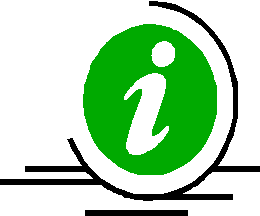
Need More Medicare Part D Updates & Information?
Return to Table of Contents
Additional Medicare Part D information and updates for pharmacists is available through the CMS website:
http://www.cms.hhs.gov/pharmacy/
Pharmacists may also sign up to receive updates from CMS directly via email. To sign up for this PHARMACY_MMA-L listserv, please visit:
http://new.cms.hhs.gov/apps/mailinglists/
Important
Information
For
Prescribers
PROVIDER EDUCATION
Cultural Competency
Return to Table of Contents

What is Cultural Competency?
Cultural Competency is defined "as a set of cultural behaviors and attitudes integrated into the practice methods of a system, agency or its professionals that enables them to work effectively in cross cultural situations."
Why is it important in my practice?
When professionals are culturally competent, they are able to establish positive relationships, engage the patient and improve the quality of service that is being provided. Health care services that are respectful of and responsive to the cultural and linguistic needs of New York's diverse population can improve overall health care.
Culture and Language May Influence:
- Health, healing and wellness belief systems.
- How illness, disease and their causes are perceived.
- The behavior of patients who are seeking health care and their attitude toward health care providers.
- The delivery of services by the provider who may look at the world through a limited set of values, which can compromise access for patients from other cultures.
There has been a dramatic increase in ethnic and racial minority populations in the United States. It is expected that the increase will only continue in the decades to come. It is critical for direct service providers to be aware of current and projected diverse populations to prepare to address the changing needs for the future.
For more information on Cultural Competency:
The Department of Health & Human Services, Administration on Aging, has a guidebook for providers of services to older Americans and their families which is available at the following website:
http://www.aoa.gov/prof/adddiv/cultural/addiv_cult.asp
The NYS Office of Minority Health offers free workshops to help organizations providing programs and services to minority communities gain skills in a variety of topical issues relevant to minority health. For more information on these workshops, please visit the following website:
http://www.nyhealth.gov/community/minority/frequently_asked_questions.htm
or call the Office of Minority Health at (518) 474-2180.
Sources: The U.S. Department of Health and Human Services, the Office of Minority Health
Office of Minority Health (OMH)
Refills are Now Covered for Plan B Emergency Contraception
Return to Table of Contents

Refills for the emergency contraceptive drug, Plan B, are covered under the Medicaid program.
Medical prescribers can write prescriptions for up to:
five refills, within a six-month period.
This policy is the same as for other oral contraceptive prescriptions covered under the program.
A new prescription is required after 180 days of the original order date of the prescription.
Questions regarding this policy may be directed to
the Bureau of Policy Development and Agency Relations at 518-473-2160.
HIPAA and Service Authorizations
Return to Table of Contents
The Medicaid implementation of HIPAA (Health Insurance Portability and Accountability Act) in March 2005 had a significant affect on the program's Service Authorization (SA) process.
- Prior to HIPAA, Medicaid had been relying on the specialty code submitted by providers to identify those claims that were SA exempt.
- Under HIPAA, providers can no longer enter specialty code information on their claims. Instead, eMedNY must utilize other claim data to correctly identify and process claims that are SA exempt.
eMedNY uses SA Exception Code 7 - Special Handling to confirm that services being claimed require a specialty exemption from the Utilization Threshold (UT) program.
Providers submitting claims for services that require an exempt specialty must enter this SA Exception Code 7 on their claim.
This entry will direct the system to search the provider master file for an SA exempt specialty code.
An exempt specialty code will not be derived unless it is listed on the provider master file.
Examples of Physician specialties that are exempt from UT and require entry of SA Exception Code 7 are:
- PPAC (158).
- Psychiatric (192).
- MOMS (159).
The entire list of physician specialties exempt from UT is in Appendix A of the Physician's Provider Manual.
On the eMedNY 150001-claim form, the SA Exception Code is entered in field 25D. On the 837P and 837I, the SA Exception Code is entered in Loop 2300 Data Element REF02 Qualifier 4N.
Questions regarding SA Exception Codes should be directed to Computer Sciences Corporation at: 800-343-9000
Attention
Private Duty
Nursing Providers
Private Duty Nursing Practices
Return to Table of Contents

Unacceptable Practices
Please review this section of your Provider Manual. Special attention should be given to the following unacceptable practices:
- Nursing services provided by an individual nurse exceeding sixteen (16) hours in a 24-hour period.
- Billing for services provided by the patient's spouse, parent, grandparent, son, son-in-law, daughter, daughter-in-law, brother or sister.
- Billing for private duty nursing services while patient is in a physician's office, clinic, hospital or other medical facility.
- Operating a motor vehicle while the nurse is purported to be providing nursing services.
It is expected that the nurse attend to the patient fully (as reflected in nursing notes) during all hours for which Medicaid reimbursement is claimed.
Billing
Please use the correct billing procedure when a single shift extends past midnight. In such a case, there are < two dates of service, requiring two separate lines on the claim. Also, single date of service may cover parts of two shifts, and should be reflected on a single claim line.
For example: When claiming for two successive 11:00 pm to 7:00 am shifts, the claim should reflect:
| Date of Service | Procedure Code | Days or Units | |
| Line 1 | 09/01/06 | S9124 | 01 (11pm-12m) |
| Line 2 | 09/02/06 | S9124 | 08 (12m-7am, 11pm-12m) |
| Line 3 | 09/03/06 | S9124 | 07 (12m-7am) |
For Questions regarding this article, please call Department staff at (518) 474-8161.
Attention
Private Duty
Nursing Providers
Billing Reminder
For The
Care At Home Waiver
Return to Table of Contents
Private nursing providers who render skilled home care services to children in the Medicaid Care At Home (CAH) I through VI waiver programs must bill using the appropriate CAH waiver procedure code with the appropriate modifier:
- S9123 U1 (RN); and
- S9124 U1 (LPN).
The only source for the fee assigned to each case is the local department of social services (LDSS) which is fiscally responsible for the child.
Therefore, it is imperative that nursing providers contact the LDSS to obtain the correct fee.
These fees < are not published in the Nursing Services provider's manual and cannot be obtained from Computer Science Corporation (CSC), Medicaid's fiscal agent.
It is the responsibility of each nursing provider to obtain a statement from the LDSS documenting the hourly fee that the LDSS has approved for each case.
- The document should be signed by the provider, and returned to the LDSS. This indicates that the provider acknowledges and agrees to bill the approved fee.
- Providers who bill above the approved fee are subject to recoupment.
Each LDSS has a CAH coordinator that can provide the required information to the providers. Providers must retain the statements for their case specific records.
Unacceptable practices for private duty nursing providers are addressed in the previous article, "Private Duty Nursing Practices."
Questions should be directed to the Bureau of Maternal and Child Health at (518) 486-6562.
Fraud impacts all taxpayers.
Return to Table of Contents
Do you suspect that a recipient or a provider has engaged in fraudulent activities?
Please call:
1-877-87FRAUD
Your call will remain confidential.
Attention
All Providers
Electronic Funds Transfer Available
Return to Table of Contents

Hundreds of Medicaid Providers have already signed up for Electronic Funds Transfer (EFT), and are enjoying the convenience of this service.
EFT Provider Enrollment Form
If you would like to enroll in EFT, complete the EFT Provider Enrollment Form that can be found at:
Prior to completing the form, please carefully read and follow the directions.
Processing Time
After sending the EFT Provider Enrollment Form to Computer Sciences Corporation (CSC), please allow 6 to 8 weeks for processing.
During this period of time you should review your bank statement and look for an EFT transaction in the amount of $0.01, which CSC will submit as a test.
Your first real EFT transaction will take place approximately 4-5 weeks later.
If you have any questions about eMedNY EFT enrollment process, please call CSC Provider Enrollment Support at 800-343-9000 (select option 5).
Do You Receive Multiple Copies of the Medicaid Update?
Return to Table of Contents
If you are enrolled in more than one category of service, you are receiving more than one Medicaid Update. We can eliminate this duplicate mailing.
Please mail to us the address page of the duplicate copies of the Medicaid Update to:
Medicaid UpdateNYS Department of Health
Office of Medicaid Management
99 Washington Ave., Suite 720
Albany, NY 12210
Or email the list of duplicate numbers to: MedicaidUpdate@health.state.ny.us)
Your 8-digit provider identification number is located directly above the name on the address label.
Restructuring Long Term Care In New York State
Return to Table of Contents
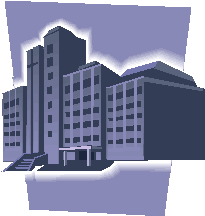
In January 2004, the Governor's Workgroup on Health Care Reform issued a report making sweeping recommendations for improvements in the State's long term health care system. The Workgroup formulated a vision for an "accessible, coordinated and person-centered long term care system that ...will support self determination; promote personal responsibility; provide services that meet consumer needs; provide quality care; and ensure accountability, efficiency and affordability."
The Department of Health (DOH) was charged to realize this major restructuring effort. Working cooperatively with the New York State Office for the Aging (NYSOFA), substantive initiatives are now underway. You may have noticed our efforts over the past year as we initiated activities at the State level and reached out to each community to elicit stakeholder input and support. If not, the following summary will bring you up to date.
A Comprehensive Long Term Care (LTC) Medicaid Waiver
The ultimate goal of our efforts is to rebalance all the elements of the State's long term care system, including the creation of a new comprehensive Medicaid waiver intended to develop more home and community based services and to change the design, delivery and eligibility requirements of Medicaid and other State funded programs.
Our next steps will be to:
- Establish a working system of Executive, Steering and Advisory Committees to ensure ongoing communication between DOH and stakeholders.
- Release a Request for Information (RFI), in Spring of 2006, to gather more targeted input on the overarching LTC service design.
- Conduct statewide meetings, anticipated for Spring 2006, with stakeholders to continue the opportunities for information sharing and planning to meet the challenges and complexities of restructuring a system to ensure access to services in the most appropriate setting.
- Pursue a new comprehensive Home and Community Based Services (HCBS) 1115 waiver for persons of all ages that will offer comparable services to those currently provided through several individual Medicaid waiver programs, including: Care at Home, Long Term Home Health Care, Traumatic Brain Injury, the new Nursing Home Transition and Diversion (NHTD) waiver anticipated to begin serving participants in Spring 2006, and other necessary services. HCBS waivers operated through the Offices of Mental Health and Mental Retardation and Developmental Disabilities will not be included.
- Access Federal funding for non-Medicaid services (e.g. Expanded In-home Services for the Elderly, Meals on Wheels) for higher income participants; and
- Emphasize personal responsibility through programs such as the NYS Partnership for Long Term Care Insurance.
Nursing Home Transition and Diversion Medicaid Waiver
As an important step toward the long range system change, DOH applied in December 2005 to the Federal Centers for Medicare and Medicaid Services (CMS) for approval of a new NHTD waiver. The program will enhance the opportunity for individuals 18 years of age and older, who are assessed to need a nursing home level of care, to receive needed services in their home or community. A Request for Application will identify contractors to operate the Regional Resource Development Centers through which the waiver will be implemented. The new waiver program will be operational once these processes are complete, which could be as soon as the second quarter of 2006.
Statewide Point of Entry
DOH and NYSOFA are also working together to establish a Point of Entry (POE) system. As an important element of the restructured long term care system, locally-based POEs will be implemented statewide and begin by providing information, initial screening and assistance to all those interested in exploring the available options for long term care in NYS or who are already receiving medical or other supportive services through NYSOFA programs, Medicaid or private pay providers.
- Earlier this winter, DOH and NYSOFA representatives traveled across the State to speak with the local leaders of Local Departments of Social Services (LDSS) and Area Agencies for the Aging (AAA) to share information about the State's plans to restructure the Medicaid long term care system.
- The POE system will be supported by a contract to establish statewide administrative systems (information technology systems, program monitoring, quality assurance, and POE staff training) and local contracts to startup/operate the POE in each county, or consortium of counties, across the State. It is expected that the request for proposals for the contracts will be issued in Spring 2006.
How You Can Follow the Process
You can find copies of all published reports documenting our progress and keep up to date on upcoming meetings, requests for information, and opportunities for related State contracts on the NYSOFA and DOH websites at:
http://www.aging.state.ny.us/explore
and
http://www.health.state.ny.us/health_care/medicaid/related/health_care_reform/index.htm
Attention
Durable Medical
Equipment Providers
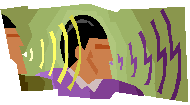
Speech Generating Devices
Return to Table of Contents
Recently, the approval process for Speech Generating Devices (SGD) was changed from Prior Approval to authorization via the Dispensing Validation System (DVS). Despite the change in process, the coverage criteria that are listed in the DME Provider Manual Fee Schedule remain the same.
Documentation of Medical Necessity Required
Dedicated SGDs are covered when medically necessary.
Documentation of medical necessity must be maintained in both the ordering and dispensing providers' files. Documentation must include:
- the physician's prescription (includes specifications for the device and the necessary therapy and training to allow the individual to meet his/her communication potential),
- the evaluation worksheet and report completed by a NYS licensed Speech Language Pathologist (SLP), and
- evidence of an adequate and successful trial of the prescribed SGD.
Speech Generating Device Rentals
Note that SGDs should be rented (modifier'-RR' ) initially for a four month trial period. Rentals include all accessories and supplies.
Dedicated Speech Generating Devices
Dedicated SGDs are speech aids that provide an individual who has severe speech impairment with the ability to meet functional speaking needs and are characterized by:
- being a dedicated SGD for use solely by the speech impaired individual;
- having digitized speech output using pre-recorded messages with defined recording times or having synthesized speech output, which requires message formulation by spelling and device access by physical contact with the device-direct selection technique, or multiple methods of device access.
Devices which are not dedicated, or are dedicated (or locked) at the time of purchase but have the ability to be unlocked by the user with the purchase of a key or code, are covered only when:
- all forever-dedicated SGDs have been ruled out as medically inappropriate to meet the individual's need of speech generation;
- replacing a device previously purchased by Medicaid or another insurer and the device continues to meet the medical need; or,
- the "language" or software used by the device is unique to the individual's medical need and changing devices would be detrimental to his/her ability to generate speech.
Commercially available laptop computers, desktop computers, tablet computers or personal digital assistants, which may be programmed to perform a speech generating function, are not covered since they are not primarily medical in nature and do not meet the definition of durable medical equipment.
A device that is useful to someone without severe speech impairment is not considered a dedicated speech generating device.
Dedicated Speech Generating Device Providers
Providers of dedicated SGDs are expected:
- to be knowledgeable about the items they dispense and provide information to the individual about the use and care of the item;
- to assist the physician and SLP in coordinating training on the device;
- to provide information regarding warranty services and uphold the terms of the warranty; and,
- to be responsible for any needed replacements or repairs that are due to defects in quality or workmanship.
Questions can be directed to the Bureau of Medical Review and Payment at 800-342-3005.
eMedNY Help Desk Hours of Operation
Return to Table of Contents
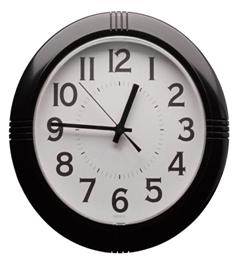
The eMedNY Help Desk is now available during the following times:
For provider inquiries pertaining to non-pharmacy billing or claims, or provider enrollment:
7:30 a.m. - 6:00 p.m., Eastern Time,
Monday through Friday (excluding holidays)
For provider inquiries pertaining to eligibility, service authorizations, DVS, and Pharmacy Claims:
7:00 a.m. - 10:00 p.m., Eastern Time,
Monday through Friday (excluding holidays)
Weekends and Holidays
8:30 a.m. - 5:30 p.m., Eastern Time
Questions? Please contact CSC Provider Services at (800) 343-9000.
Attention
All Providers
Claim Submission Methods
Return to Table of Contents
- Submission formats vary based upon provider type:
Provider Type Paper Claim Form Electronic Format Dental eMedNY 000201 837 Dental Transportation eMedNY 000201 837 Professional (837P) Fee for Service * eMedNY 150001 837 Professional (837P) Rate Based UB-92 837 Institutional (837I) Pharmacy eMedNY 000301 NCPDP
* Electronic Referred Ambulatory claims may be billed using the < 837P or <837I format
- The following electronic submission methods are available at eMedNY:
- eMedNY eXchange
- eMedNY Gateway (BBS)
- CPU - CPU
- File Transfer Protocol (FTP)
- Electronic Provider Assisted Claim Entry System (ePACES) - HIPAA compliant web-based application
Note - Clinic and Inpatient billing must be submitted electronically.
To send or receive electronic claim information providers need the following:
- ETIN (Electronic Transmission Identification Number)
- Certification Statement
- Trading Partner Agreement
- User ID and Password
- Request for Electronic Remittance Advice (to receive 835 or 820)
Timing Is Everything
During the process of billing or rebilling Medicaid claims, questions about time constraints arise. Some of the most common of these questions regard "How Long" information is on the Medicaid system and "How Long" a claim is pended.
As a reference source, listed below are some time frames categorized by the following:

- Less than 30 days
- 30 days
- 60 days
- 90 days
- Greater than 90 days
Less Than 30 Days
- Medicaid checks and remits are held for two weeks and two days before mailing
30 Days
- Approximate payment time for claims (including check lag period)
- The length of time a Pharmacy claim is pending for "No UT Service Authorization On File"
- Length of time a UT Service Authorization stays on file for Pharmacy transactions
60 Days
- The length of time a claim other than Pharmacy pends for "NO UT SERVICE AUTHORIZATION ON FILE"
90 Days
- Length of time to submit claims without a valid 90 day reason
Greater than 90 Days
- 120 days (four months) - Length of time a UT Service Authorization stays on file, excluding < Pharmacy (see above)
- Up to two years - Length of time to submit a claim with a valid 90 day reason
- Up to six years - Length of time to submit an adjustment or void to a previously paid claim
Additional Timing Information
Pending Claims
Question: How long will the claim stay in a pending status?
Answer: Claims remain in a pending status on the remittance statement for various time frames depending on the reason for the pend and the provider type.
Recycled Pends
Some claims are recycled and will be paid if during the pending period updated information is placed on eMedNY files. Examples of this would be < Edit 00162 - Recipient Ineligible for Date of Service. In most instances, these claims are pended for 30 days. If the recipient eligibility information is updated in that time frame and no other errors are found, the claims are paid.
Another example of a recycled pending claim is < Edit 01154 - No UT Service Authorization on File. These claims are put in a pending status for 60 days. (The exception is pharmacy claims, which are in a pending status for 30 days.) If the authorization is placed on file while the claim is pending and no other errors are found, the claims will be paid.
NYS Manual Review
Claims that are put in a pending status to be manually reviewed at a State office will pend for various time frames while the claim and/or associated documentation (reports) are reviewed.
Questions about this information should be directed to the eMedNY Provider Services Call Center at: (800) 343-9000.
Attention
All Providers:
eMedNY Training
Reminder!
Seminar Schedule and Registration
Return to Table of Contents
Computer Sciences Corporation (CSC) announces a schedule of seminars to be offered to providers and their billing staff.
Seminar locations and dates are available at the eMedNY website. Registration is fast and easy.
Go to http://www.emedny.org/training/index.aspx to register for the eMedNY Training Seminar appropriate for your provider category and location.

If you are unable to access the internet to register, please contact CSC's call center at (800) 343-9000, to obtain a registration form.
You may also request seminar schedule and registration information by contacting CSC's Fax on Demand at (800) 370-5809.
Please refer to these resources frequently for additional seminar offerings.
CSC representatives look forward to meeting with you at upcoming seminars!
Attention
All Providers:
FAX-ON-DEMAND SYSTEM
Return to Table of Contents
Do you need a quick reference for Medicaid or a form but don't have access to the Internet?
Try the Provider Services Fax-On-Demand System, faxable quick reference documents for NYS Medicaid-related topics available to you 24 hours a day, seven days a week. It's easy!
What do you need?
All you need is a touch-tone telephone, a fax machine to receive the document and a telephone or extension number that will identify you as the recipient of the requested document(s).
How Do You Access the Fax-on-Demand System?
Dial 800-370-5809.
If you encounter problems navigating the document selection menu, please contact the Provider Services Call Center at 800-343-9000 for assistance.
What Documents Are Available to You?
Documents are currently available for the following topics:
Note:
Many of these documents are also available at
www.eMedNY.org
- Medicaid Seminar Information
- EFT Provider Enrollment
- Electronic Remittance Request
- DOH Letters
- Forms
- ePACES & ePACES Enrollment
- Supplementary Medicaid Documents
- NCPDP PC to Host Testing
You may request up to five documents at a time!
It is recommended that you request a document listing (option 2) when you call the Fax-on-Demand System for the first time to obtain a list of available documents. Then, request the document list periodically to ensure that you have the most current update of a document and to see if any new documents of interest have been added.
What if You Do Not Receive a Document That You've Requested?
If you do not receive a document that you've requested from the Fax-On-Demand system, please verify that you are entering the correct number for your fax machine during the request process and that your fax machine is operational.
Providers!
Photocopy This Information For Your Patients!
Many of Your Patients May Benefit
From the Earned Income Tax Credit!
Return to Table of Contents
The Earned Income Tax Credit (EITC) is an important tax benefit that may be available to your Medicaid and other patients with low earned income. The EITC can significantly increase the available income of low income wage earners.
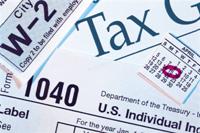
For example, a family with two children and one wage earner holding a full-time minimum wage job can increase their income by over one-third from state and federal EITC(s).
The EITC is not counted as income for Medicaid or Family Health Plus.
Medicaid does not count the EITC as a resource in the month the EITC payment is received or in the following month.
The maximum credits are:
| Two or more children | $4400 (federal) + $1320 (state) = $5720 |
| One child | $2662 (federal) + $ 798 (state) = $3460 |
| No children | $ 399 (federal) + $ 119 (state) = $ 518 |
The Volunteer Income Tax Assistance Program (VITA) offers free tax help to people with low earned income. Volunteers are trained to help prepare basic tax returns in communities across the country.
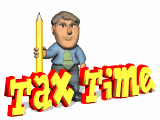
VITA sites are located at community and neighborhood centers, libraries, schools, shopping malls, and other convenient locations. To locate the nearest VITA site, call 800-829-1040.
Please encourage your patients to file a tax return. To claim an EITC credit the wage earner must file a tax return, even if the wage earner's income does not require that a tax return be filed.
Please feel free to copy the brochure below and distribute it to your patients.
Other brochures about this program (available in English, Arabic, Chinese, Russian, and Spanish) along with additional information about the EITC, can be found at:
_________________________________________________
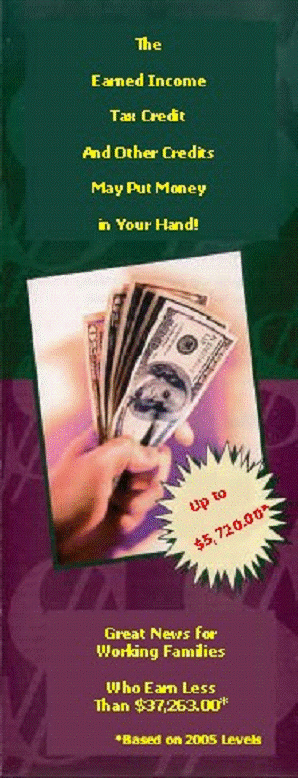
Is it worth doing?
Absolutely! While the amounts will vary depending on your family's earned income and the number of qualifying children in your household, you may be eligible for a tax credit. Below are some examples of combined federal and state Earned Income Tax Credits (EITCs):

a family with two or more qualifying children may be eligible for up to $5,720.
a family with one qualifying child may be eligible for up to $3,460.
a family with no qualifying children may be eligible for up to $518.
Imagine getting an extra $5,000!
Purchase an automobile or buy a better one;
Buy a computer for you and your children;
Improve your housing;
Purchase school clothing, school supplies, or sports equipment for your children;
Or help pay for rent, heat and current or past bills.
Best of all, EITC money usually does not affect TANF, Food Stamps, SSI, public housing or Medicaid.
You can spend EITC money any way you want to!
What is a "qualifying child"?
A "qualifying child" is a child who is your son or daughter, grandchild, adopted child, stepchild or foster child, sibling, stepsibling, or a descendent of one of these relatives, AND who (at the end of the year) was under age 19 OR under age 24 and a full time student OR any age and permanently and totally disabled AND who lived with you in the U.S. for more than half of the year. Brothers, sisters, step brothers, step sisters - and descendants of of such relatives - may also qualify you if they were cared for as a member of your family.
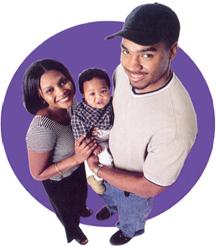
Questions?
Call the IRS toll free at 1-800-829-1040.
(for Spanish, press 8).
Free Tax Help
Don't pay to have your taxes prepared. You can get your refund just as quickly without paying any fees by visiting a Volunteer Income Tax Assistance Center (VITA). To find a VITA center near you, call the IRS toll free number listed above.
How do I get the money?
There are two different ways to get the money. Working families may either get the entire EITC all at once when you file your tax forms, OR, you can receive a portion of the EITC in advance with each paycheck, up to $117 per month and the rest in a lump sum. Ask your employer for a form called "W-5 -EIC Advance Payment Certificate".
Do I have to fill out tax forms?
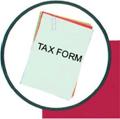
Yes. his program is based on the money you earn from your job, and you must file income tax forms even if you own no taxes to apply for the EITC money. If you are raising qualifying children, you need federal tax form 1040 (or you can use 1040A) and you must attach Schedule EIC. You also need the NYS tax form IT-215. If you are not raising children, you may still qualify, but you must file different forms.
Can I only receive EITC money for this year?
Families who qualified in the past two years and never received the EITCs may do so now by updating their Federal tax form and filing the New York State tax form IT-215 for that year.
What other Tax Credits are available?
Child Tax Credit (CTC) And Additional CTC:
- The CTC, worth up to $1000 for each qualifying child, is a non refundable credit used to reduce the amount of tax you owe. If the CTC exceeds the amount of tax owed, you may, if eligible, claim the difference as an additional CTC. This credit may be claimed by completing Form 8812: Additional Child Tax Credit.
Education Credits:
There are two education credits that may be claimed by each eligible student.
- Hope Credit: This credit applies to the first two taxable years of post secondary education. $1500 is the maximum credit per student that may be claimed.
- Lifetime Learning Credit: This credit is based upon the total of qualified education expenses and the maximum credit is $1000 per year.
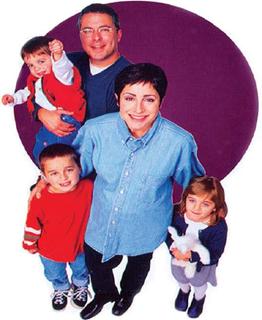
Where can I get the tax forms?
Tax forms are available at libraries, post offices, and banks.
Federal forms are also available at www.irs.gov (click on forms and publications).
New York State forms are available at www.tax.ny.gov (click on forms and instructions).
Who can I call with questions?
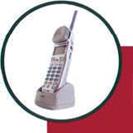
For information and help filing your federal taxes, call the IRS at:
1 (800) 829-1040 (for Spanish, press 8).
For help with NYS taxes, call: 1 (800) 225-5829.
Families can also receive help by visiting a Volunteer Income Tax Assistance Center (VITA). To find a VITA center near you, call the IRS toll free number listed above.
New York State Office of Temporary and Disability Assistance www.otda.state.ny.us
 State of New York George E. Pataki, Governor
State of New York George E. Pataki, Governor
Pub-4786 (Rev 11/05 )

PROVIDER SERVICES
Return to Table of Contents
Missing Issues?
The Medicaid Update, now indexed by subject area, can be accessed online at the New York State Department of Health website:
http://www.health_care/medicaid/program/update/main.htm
Hard copies can be obtained upon request by emailing: MedicaidUpdate@health.state.ny.us or by calling (518) 474-9219.
Do You Suspect Fraud? If you suspect that a recipient or a provider has engaged in fraudulent activities, please call the fraud hotline at: 1-877-87FRAUD. Your call will remain confidential.
As a Pharmacist, Where Can I Access the List of Medicaid Reimbursable Drugs?
The list of Medicaid reimbursable drugs is available at: http://www.eMedNY.org/info/formfile.html
Questions About an Article?
For your convenience each article contains a contact number for further information, questions or comments.
Do You Want Information On Patient Educational Tools and Medicaid's Disease Management Initiatives?
Contact Department staff at (518) 474-9219.
Questions About HIPAA?
Please contact CSC Provider Services at (800) 343-9000.
Address Change?
Questions should be directed to CSC at (800) 343-900, option 5.
Patient Eligibility
Call the Touchtone Telephone Verification System (800) 997-1111, (800) 225-3040 or (800) 343-9000.
Fee-for-service Provider Enrollment
A change of address form is available at:
http://www.emedny.org/info/ProviderEnrollment/Provider%20Maintenance%20Forms/6101-Address%20Change%20Form.pdf.
Rate-based/Institutional Provider Enrollment
A change of address form is available at:
http://www.emedny.org/info/ProviderEnrollment/Provider%20Maintenance%20Forms/6106-Rate%20Based%20Change%20of%20Address%20Form.pdf
Billing Question? Call Computer Sciences Corporation:
Provider Services (800) 343-9000.
Comments and Suggestions Regarding This Publication?
Please contact the editor, Timothy Perry-Coon at MedicaidUpdate@health.state.ny.us or via telephone at (518) 474-9219 with your concerns.
The Medicaid Update: Your Window Into The Medicaid Program
The State Department of Health welcomes your comments or suggestions regarding the Medicaid Update.
Please send suggestions to the editor, Timothy Perry-Coon:
NYS Department of Health
Office of Medicaid Management
Bureau of Program Guidance
99 Washington Ave., Suite 720
Albany, NY 12210
(e-mail MedicaidUpdate@health.state.ny.us)
The Medicaid Update, along with past issues of the Medicaid Update, can be accessed online at the New York State Department of Health web site:http://www.health_care/medicaid/program/update/main.htm